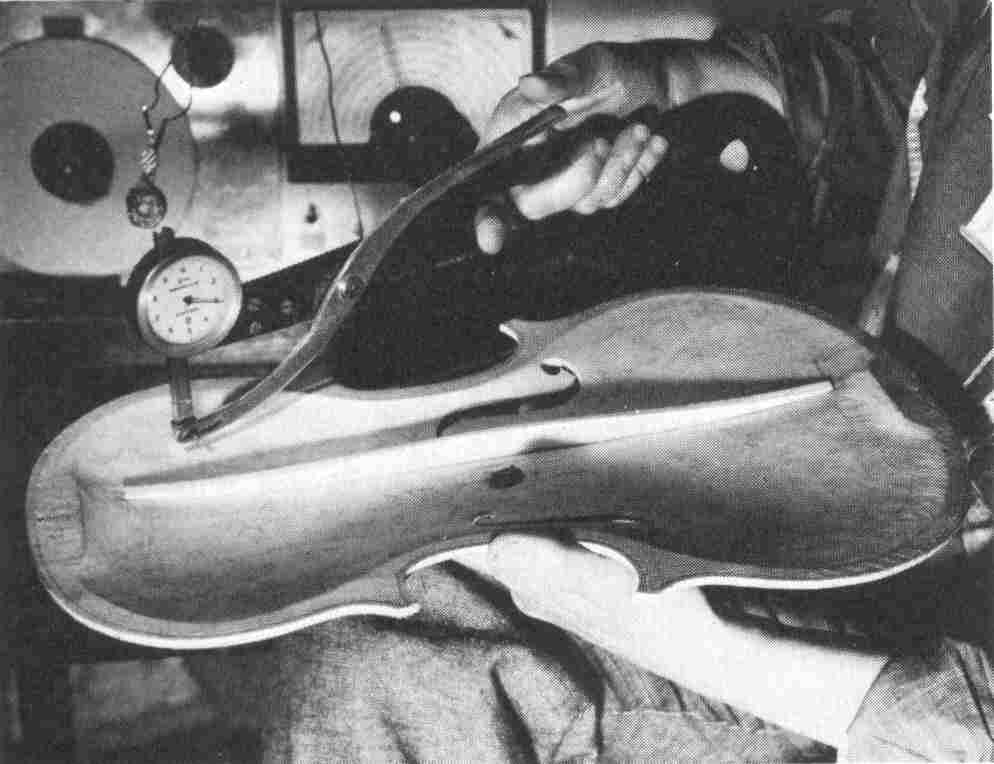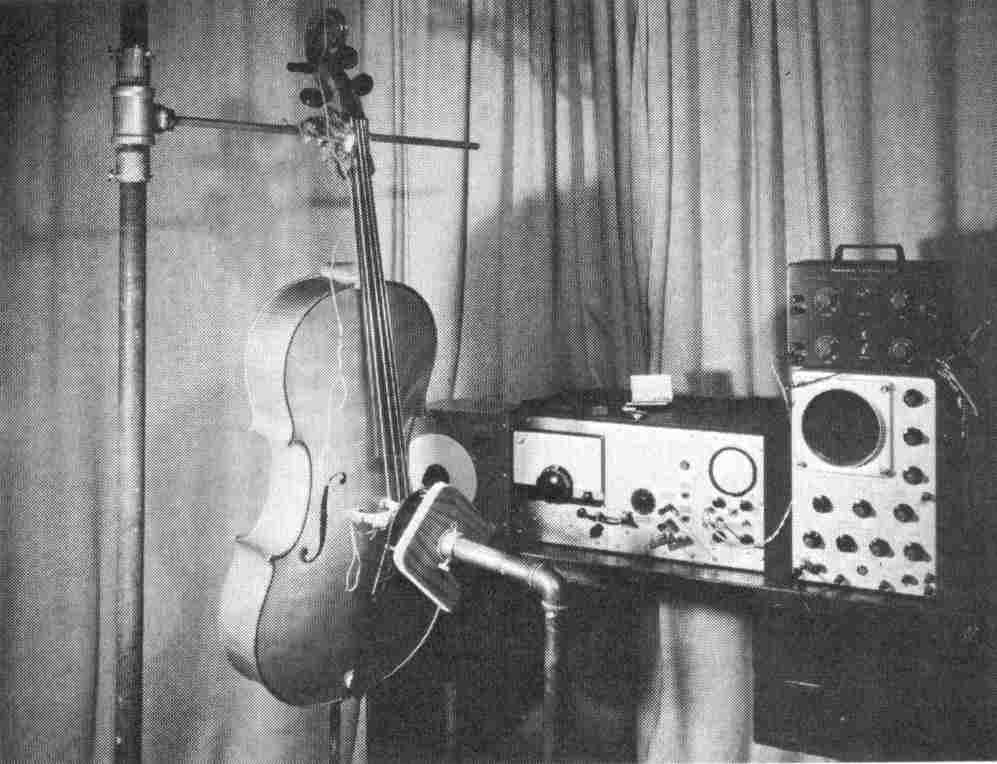
From our set of experimentally adapted instruments, which represent a variety of styles and designs in violin making, we had learned many things. The vertical viola was about right in body dimensions, but its strings were too long for viola fingering and too short for cello fingering. The tenor was too small, and the cellists were asking for it to have strings as long as possible. The baritone was right for body size, but it had much too long strings. The bass players were asking for a long neck on the small bass and a short one on the large bass with string lengths as close as possible to conventional.
From such comments we realized that there were two basic designs for ease of playing in relation to string lengths and overall mensure of each instrument. Controlling factor in the instrument mensure is placement of the notches of the f holes because a line drawn between these two points dictates the position of the bridge and the highest part of the arch of the top plate. Mensure for the tenor and small bass would need to be as great as possible and for the vertical viola and baritone it would need to be as small as possible. Since the relative areas of the upper and lower bouts are critical factors in plate tuning, adjustment of these mensures posed quite a set of problems.
We developed a series of scaling factors [Ref 3] based on relative body length, relative resonance placement and relafive string tuning that could be used as a reference guide in actual instrument construction. Figure 5 shows the set which has proved most useful in making the eight new instruments as well as those of conventional instruments.

We had a problem in measuring responses of plates of many sizes - all the way from the 10.5-in. (26-cm) one of the treble violin to the 51-in. (130-cm) one of the contrabiss. We solved it by redesigning our transducer from a magnet-armature to a moving-coil type. Then the wooden fiddle plate, suspended at its corners by elastic bands, was made to vibrate as the cone of a loudspeaker (figure 6).
Using the know-how developed in making and testing several hundred violin, viola and cello plates, I could tune the plates of new instruments so that not only did each pair of top and back plates have the desired frequency relation, [Ref 2] but it also had its wood thicknesses adjusted to give a reasonable approach to what would be an optimal response. [Ref 15]
As a starting guide in adjusting plate frequencies I used the finding that a seven-semitone interval should separate the main body resonance of the finished violin from the average of the two frequencies of the free plates. It was soon obvious, however, that this relationship was not going to hold as the instruments increased in size. As the instrument gets larger the interval becomes smaller, but we do not have enough data yet to make a precise statement about it.
We used scaling theory and the three basic acoustical tools of scientific violin making: (a) frequency relationship between free top and back plates, (b) optimal response in each plate and (c) interval between body resonance and average of free-plate frequencies. We are able not only to create new instruments of the violin family but also to improve the present members. But we have to combine the acoustical tools with the highest art of violin making.
Fig. 6 - TESTING FIDDLES. New techniques enable today's makers to achieve
results their predecessors could not produce. Redesigned transducer
measures response of plate that is made to vibrate like a loudspeaker
cone in operation.



